27 genius kitchen cleaning hacks to save you time, money and effort
These savvy and cost-efficient kitchen cleaning hacks will get your space sparkling in no time
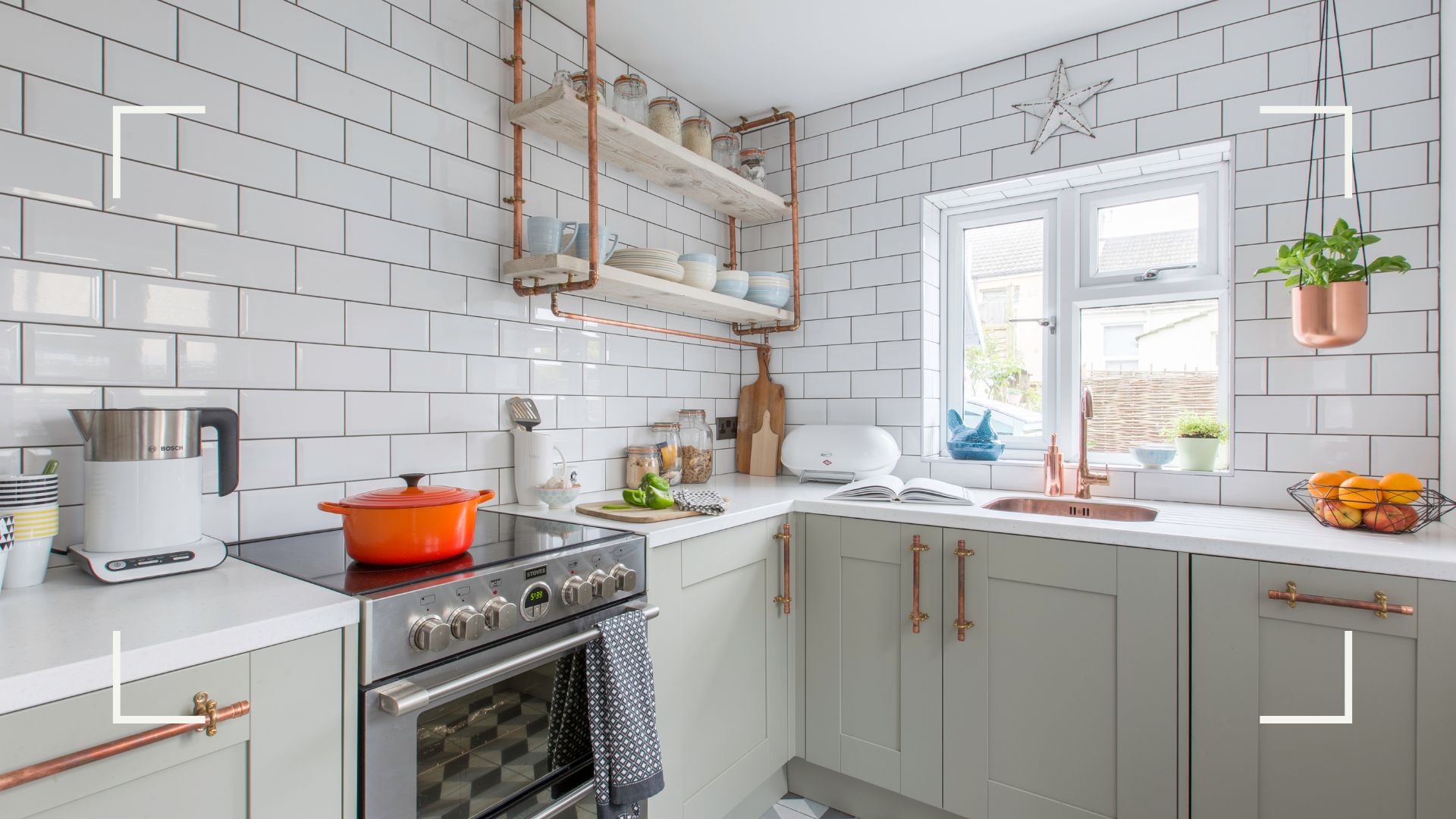

Katie Byrne
Kitchen cleaning hacks are a lifeline for anyone who wants a clean cooking space but doesn't have time for endless scrubbing. And who doesn't want that? Keeping your kitchen clean can feel like a full-time job – whether it’s dealing with appliances, trash, or dirty surfaces, there’s a lot of work that goes into ensuring kitchens are kept spick and span each day.
Luckily, these simple yet effective cleaning hacks will help keep your kitchen cleaning routine to a minimum while ensuring the space where you serve family dinners, host social gatherings, or cook up a storm is kept fresh and hygienic at all times.
We’ve rounded up the most ingenious kitchen cleaning hacks endorsed by cleaning experts to make essential cleaning even easier. Even better, most of these tricks use common household items to tackle a wide range of scenarios - which helps to keep costs low too.
27 surprising kitchen cleaning hacks used by experts
1. Steam clean your microwave
Cleaning the microwave may not be the most pleasant of tasks, but you can save time and elbow grease by loosening any cooked-on food mess first.
"Use lemon slices in water as a natural way to deodorize and clean your microwave," suggests Heather Nixon, sustainability, NPD, and regulatory manager at Bio-D. Pop a few slices of lemon into a microwave-friendly bowl and put the power on for a few minutes. Then, let the steam sit in the microwave for a few minutes to loosen any stubborn marks or stuck-on food and neutralize lingering odors.
Using the same principles as the best steam cleaners, this effective hack uses the steam to melt the grime away. Tackle your microwave walls as usual with a clean sponge and you should find scrubbing time is significantly reduced.
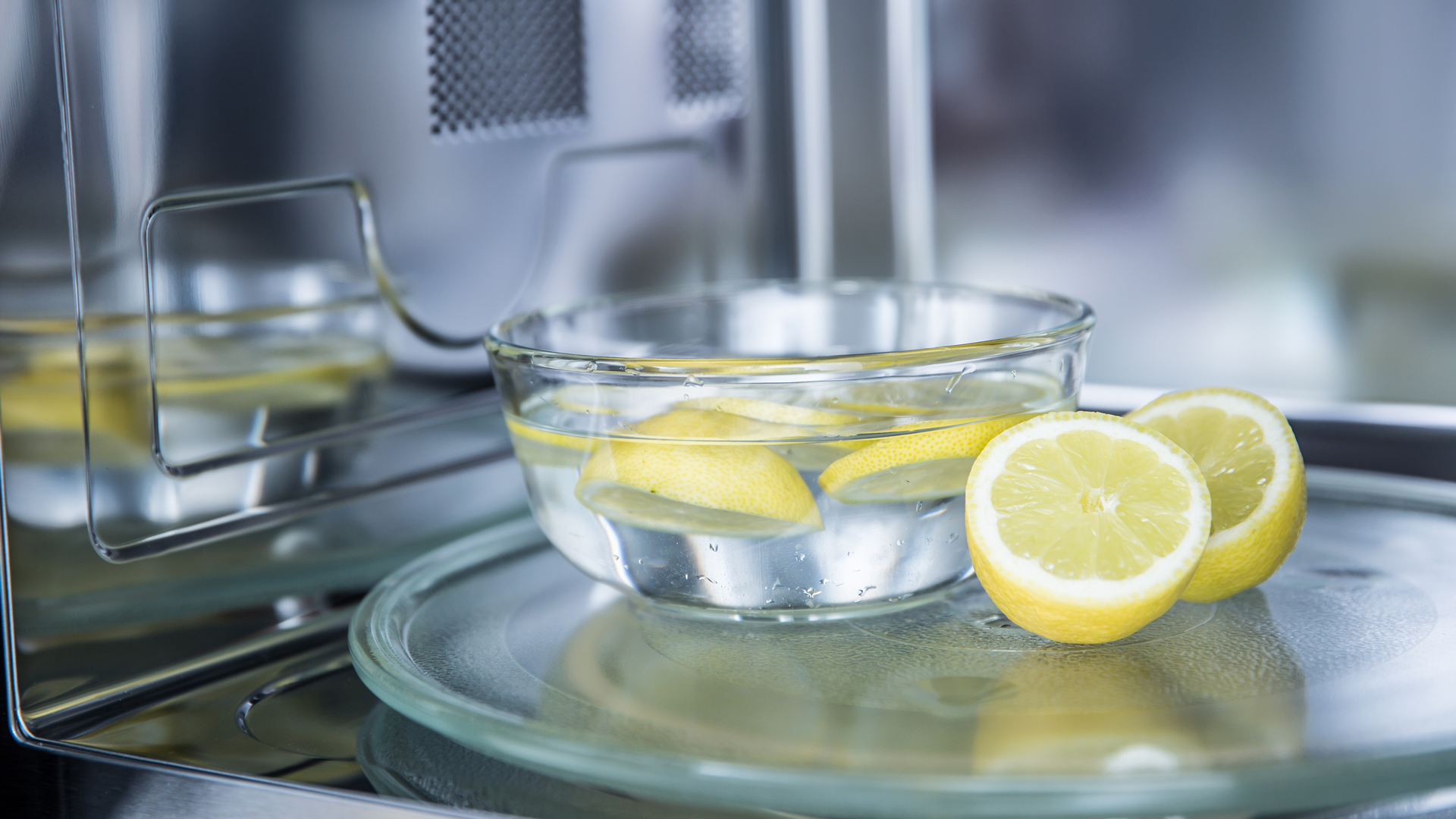
2. Use vinegar to descale a kettle
Looking for a quick-fix way to descale a long-serving kettle? Vinegar can help. Cleaning with vinegar is for a whole host of other cleaning tasks, but especially perfect for shifting limescale when descaling a kettle due to its acidic pH.
Sign up for the woman&home newsletter
Sign up to our free daily email for the latest royal and entertainment news, interesting opinion, expert advice on styling and beauty trends, and no-nonsense guides to the health and wellness questions you want answered.
"Fill your kettle with half white vinegar and half cold water and boil," advises PriceYourJob’s cleaning expert Matthew Harrison. "Pour the boiled water away and refill your kettle again with just water and boil to remove any lingering vinegar." After that enjoy a limescale-free kettle every time you make a cup of tea or coffee.
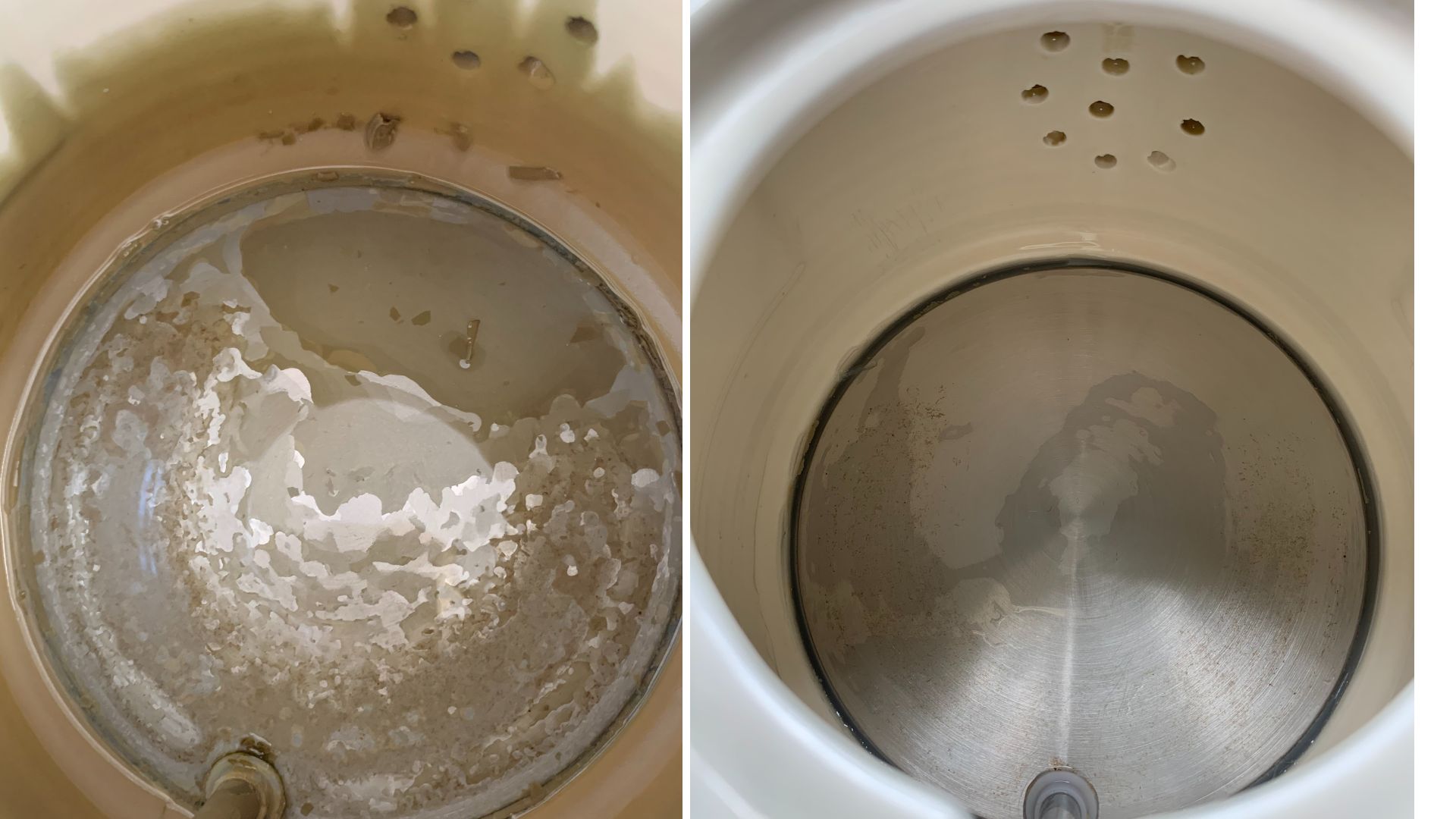
3. Deodorise drains with dishwasher tablets
Keeping sink plugholes and drains clean and deodorized is a key part of maintaining a well-running, pleasant-smelling cooking space. If your sink is producing unwanted odors, don’t panic, as there's an easy hack to get rid of them.
“For a quick drain clean, put a dishwasher tablet over the top of the plug and run boiling water over the top of it so it dissolves," suggests Ivan Ivanov, cleaning expert at End of Tenancy Cleaning. "This should unblock some of the grime and leave it smelling fresh."
4. Tackle a sink blockage with baking soda
If your kitchen sink is slow to drain, there's no need for commercial cleaners or bleach. Instead, reach for the dish soap. Due to its degreasing nature, it can be ideal for helping to unclog blockages, simply pour down the plug hole, and run some hot water. Be aware this might not work for tougher blockages, but it's certainly a great starting point.
If you need a more substantial mixture try a natural remedy, championed by experts: "To unclog your drain, start by slowly pouring a kettle full of boiling water down the drain. Then pour in a cup of baking soda and a solution of 1 cup water/1 cup vinegar down the drain, " advises Sarah Dempsey cleaning expert at MyJobQuote. "Cover the drain and wait 5 minutes before pouring another kettle full of boiling water down the drain."
5. Try a dash of vinegar in your dishwasher
If you haven't got time to follow a step-by-step guide on how to clean a dishwasher but want to give your dishwasher a once-over, there's an easy way to get the job done. “Simply add a small dish of white vinegar to the top shelf of your dishwasher to give it a good clean,” recommends Lynsey Crombie, TV's cleaning expert publicly known as the 'Queen of Clean.' Keep the machine empty bar the vinegar and run a complete cycle to remove residue.
To tackle smells, turn to the bicarb. First, clean your dishwasher by hand as much as you can to remove any obvious food debris; then, sprinkle a cup of baking soda across the bottom of the appliance. Run a short, hot cycle and any odors should melt away. For an extra touch, let a wedge of lemon (or even just some lemon peel) sit in the cutlery compartment.

6. Line cupboards with newspaper
"Out of sight, out of mind" might be your usual mantra when it comes to kitchen cupboards but if you're keen to keep kitchen cabinets clean, it's easier than you might think.
Simply line the top of your well-organized kitchen cabinets with a layer of greaseproof paper or old newspaper (one or two sheets should work perfectly). This will soak up all the grease particles and capture any debris such as dust. Remove and replace them once a month to keep those hard-to-reach areas free and clear. It's much easier than climbing on top of your countertops with a feather duster.
7. Use olive oil to polish surfaces
Use a tiny amount of olive oil when cleaning your stainless steel sink to keep the area looking super shiny. After washing with soap and water, buff a few drops of oil into the surface of the sink with a clean microfibre cloth for a mirror-like finish.
This isn't a tip that just works for sinks, olive oil can act as a polish for other surfaces in the kitchen, like countertops and the fridge door, and even wooden kitchen tables – just make sure you use it sparingly.
"As well as being able to cut through grime and grease, olive oil nourishes a surface, especially something like a wooden table," says Howard Moss, CEO of Astonish. “Olive oil can be used as a DIY polish. It’s environmentally friendly, effective, and gives it an extra purpose in the kitchen.”
8. Use an onion to clean oven racks
Don't discard leftover onions, because they are the ideal cleaning tool. "For stubborn food excess and grease on oven grills, try rubbing half an onion on the grills," suggests Heather.
This savvy food trick for cleaning is favored as the preferred method for how to clean a BBQ, so it would make sense to apply it to cleaning an oven too. "Soaking grills in hot water and washing up liquid for half an hour also helps."
9. Mask bin odors with cotton balls and essential oils
Fed up with the unpleasant odors that your kitchen dustbin generates as it starts to fill up? To keep it smelling clean, immerse a cotton wool ball or pad in your favorite essential oil and pop it into the base of your trash can for a fuss-free way to cover and dispel the stench.
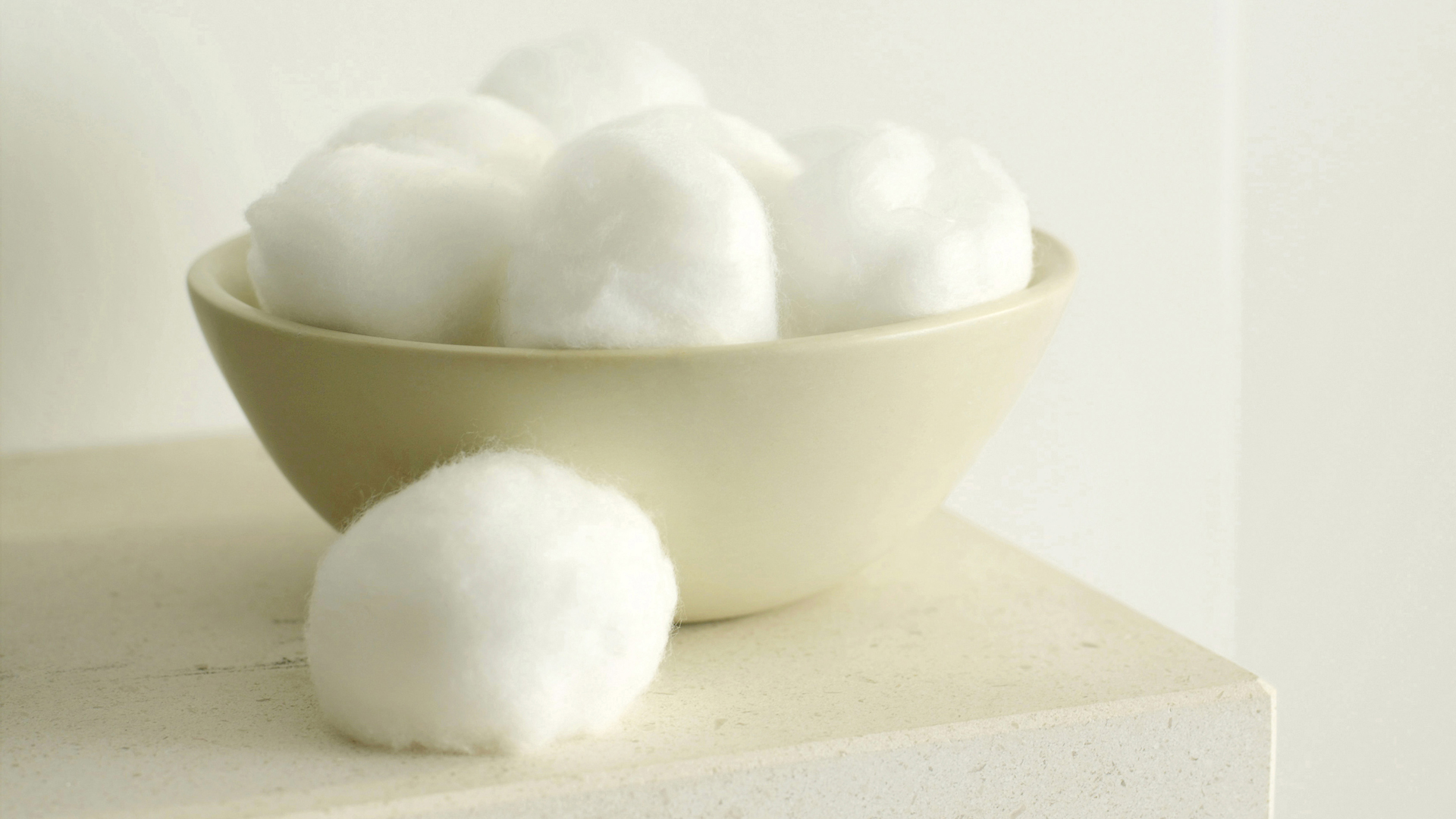
10. Banish bad fridge smells with orange and cloves
If your fridge has an unfortunate odor from food that's past its best, wiping it down might not be enough to restore a fresh scent. Instead, after cleaning out the offending contents and cleaning your fridge with hot soapy water, pop in half a lemon or orange with cloves pushed into the skin to soak up unpleasant smells.
Leave it there for a good hour, or longer if you can, while you carry out any other kitchen tasks. If you are more of a fan of sweet scents, like vanilla, soak a cotton call in vanilla extract and place it in the fridge in a small bowl.
11. Use cold tea to clean glass surfaces
The power of tea isn’t to be underestimated, did you know that the tannin compounds in your cuppa can actually help with shifting smudges from your kitchen glass surfaces and windows?
For a quick fix to cleaning windows or glass microwave and oven doors, stew black tea in boiling water and allow it to cool before transferring to a spray bottle. Spritz onto the glass surface and wipe off as you would normally; wiping with newspaper is a particularly fantastic option for a streak-free finish.
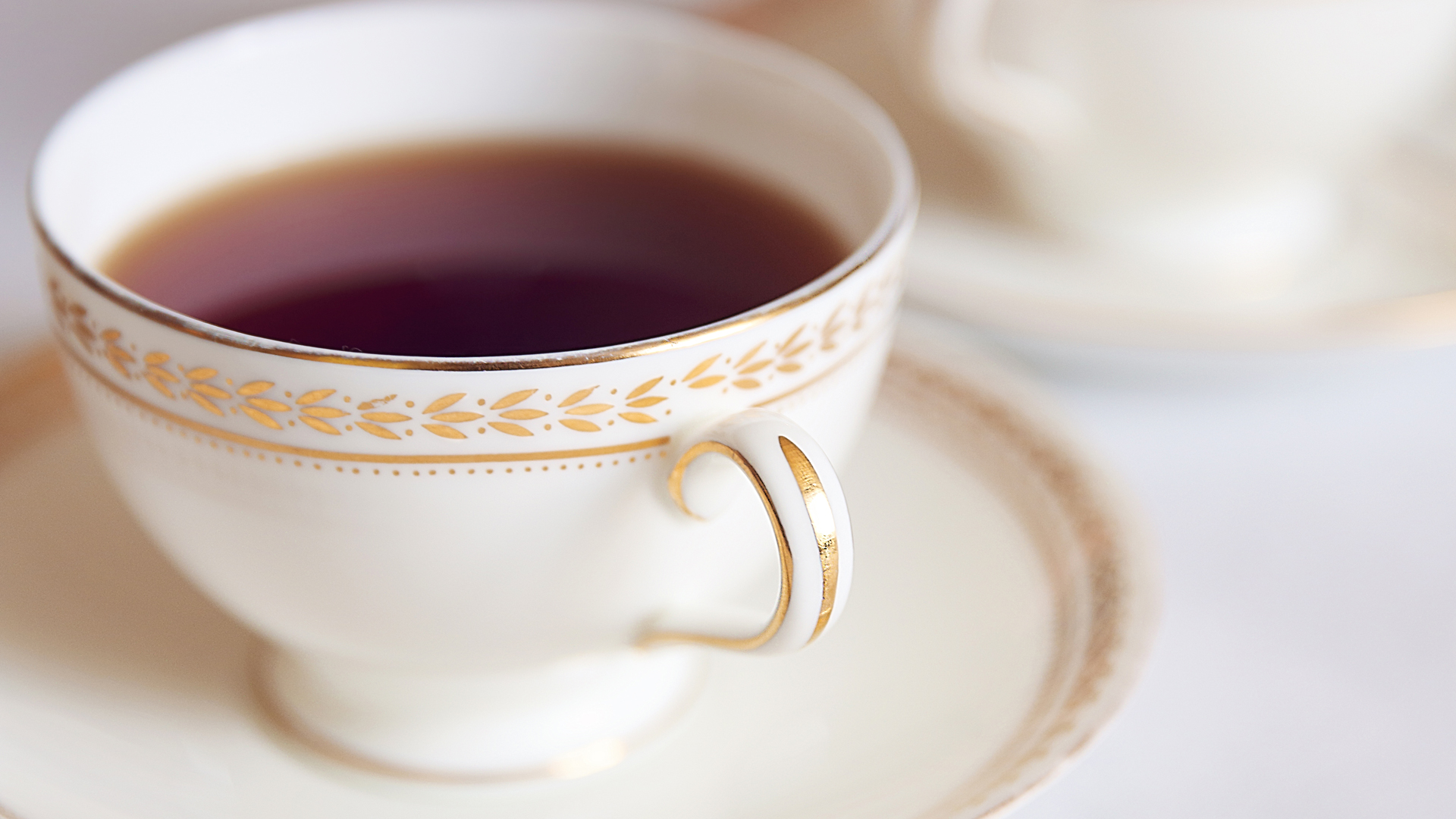
12. Use bread for cleaning up glass breakages
If you've smashed or dropped something made of glass, there's usually a panic to stay out of the kitchen until every last inch of shattered shards has been picked up –normally requiring both a sweep and an eye cast over the floor to spot any smaller pieces. But there's actually an easy way to clean and clear your floor of glass after an accident.
Simply grab a slice of bread (any kind will do!), and place it gently over each section of your floor. The soft, moist nature of the bread attracts and will hold the broken glass, allowing you to pick up even the tiniest shards. Double-check the floor yourself after cleaning but sacrificing a slice of bread is a quick way of tackling the issue. This technique should be used with caution and for smaller shards that otherwise might go undetected. For bigger breakages, your dust and shovel will still be the way forward.
13. Run your blender to clean it
Do you love making smoothies but hate trying to clean your blender afterward? After all, even the best blenders can be tricky to wash up, with so many fiddly nooks and crannies. But never fear, as there is an easy hack for cleaning your blender when using it every morning.
Mix hot water with washing-up liquid and pour three cups of the bubbly solution into your blender. Run the blender for one minute and then rinse it out with water. It should be sparkling and even those hard-to-clean blades should be in glistening condition.
14. Restore your chopping board with lemon
If your faithful wooden kitchen chopping board is in need of some serious revitalization, reach for the lemon and salt. No, we’re not suggesting you offer it a Tequila shot – rather, rubbing lemon juice into its surface and sprinkling it with salt can help bring even the most tired-looking boards back to life.
"Try the disinfecting and cleaning ability on kitchen chopping boards," suggests Cleaning influencer Dominika, better known as Washy_Wash on TikTok. "By rubbing the sliced lemon or its already squeezed remnants, you will remove faded stains, as well as bacteria, from the surface. For particularly resistant dirt, use a little salt, which you will scrub into the surface with a lemon."
Leave the lemon-and-salt combo to sit for around 15 minutes and then rinse clean. You'll be left with a soft, clean chopping board that looks like new.
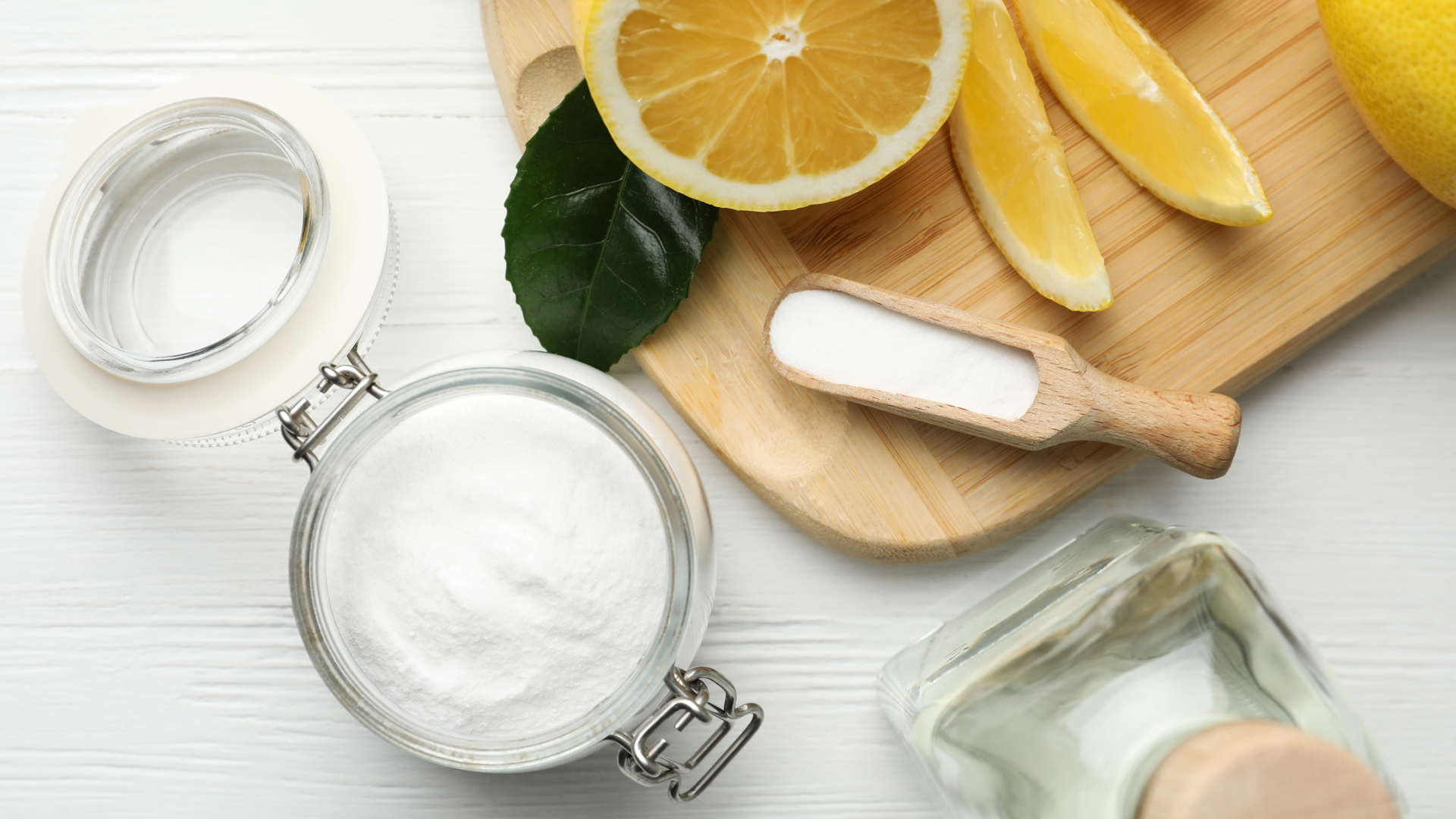
15. Remove watermarks with lemon
Similarly, marks left by hard water on your sink, draining board, taps or other kitchen essentials can be minimized by rubbing them with a chunk of lemon. Simply wipe the lemon over the offending marks, wiping in gentle circular motions. Take a soft microfibre cloth to rinse the area afterward with fresh warm water to remove the acidic lemon juice from the surfaces.
16. Swipe a soft cloth over lightbulbs
We bet you've never thought about cleaning your kitchen lightbulbs before. This isn't simply to add another cleaning task to your schedule, but more to ensure your lights are functioning as well as they should and to ensure you love spending time in the kitchen.
Microfiber cloths are great for giving the light fittings in your kitchen a gentle clean because they are soft and non-abrasive and therefore ideal for removing dust from bulbs and shades. Just remember to turn your lights off before you start cleaning!
A clean paintbrush can also produce similarly illuminating results. Cleaning your bulbs will create the best light possible and make your kitchen a nicer place to be.
17. Use oven liners to avoid burnt-on food
Oven liners can work wonders if you’re fed up with trying to remove burnt-on food from your oven. Simply place one at the bottom of the oven to catch all the food that drops, and just clean when necessary.
“They’re an absolute game-changer,” says Gemma Bray, founder of The Organised Mum. “You can buy them fairly cheaply and they’re made from a flexible material that lines the bottom of your oven. They’re reusable and very easy to rinse under the tap. Adding one to the bottom of your oven is much easier than scrubbing; the burnt-on food slips off the liner in seconds! There are different liners for different types of ovens so make sure you check which one you need.”
18. Tackle fridge spills with cling film
Lining the shelves and compartments of your fridge can make tackling unwanted mess and spills a piece of cake. Simply cover the interior surfaces of your refrigerator with either cling film or tin foil, and then remove and replace as and when required. This means you'll catch any milk spills or food scraps on the tin foil or cling film, and can easily clean it up without having to scrub at the shelves.
You can try a similar approach in your food cupboards and on your organized pantry shelves, too – so simple yet so effective.
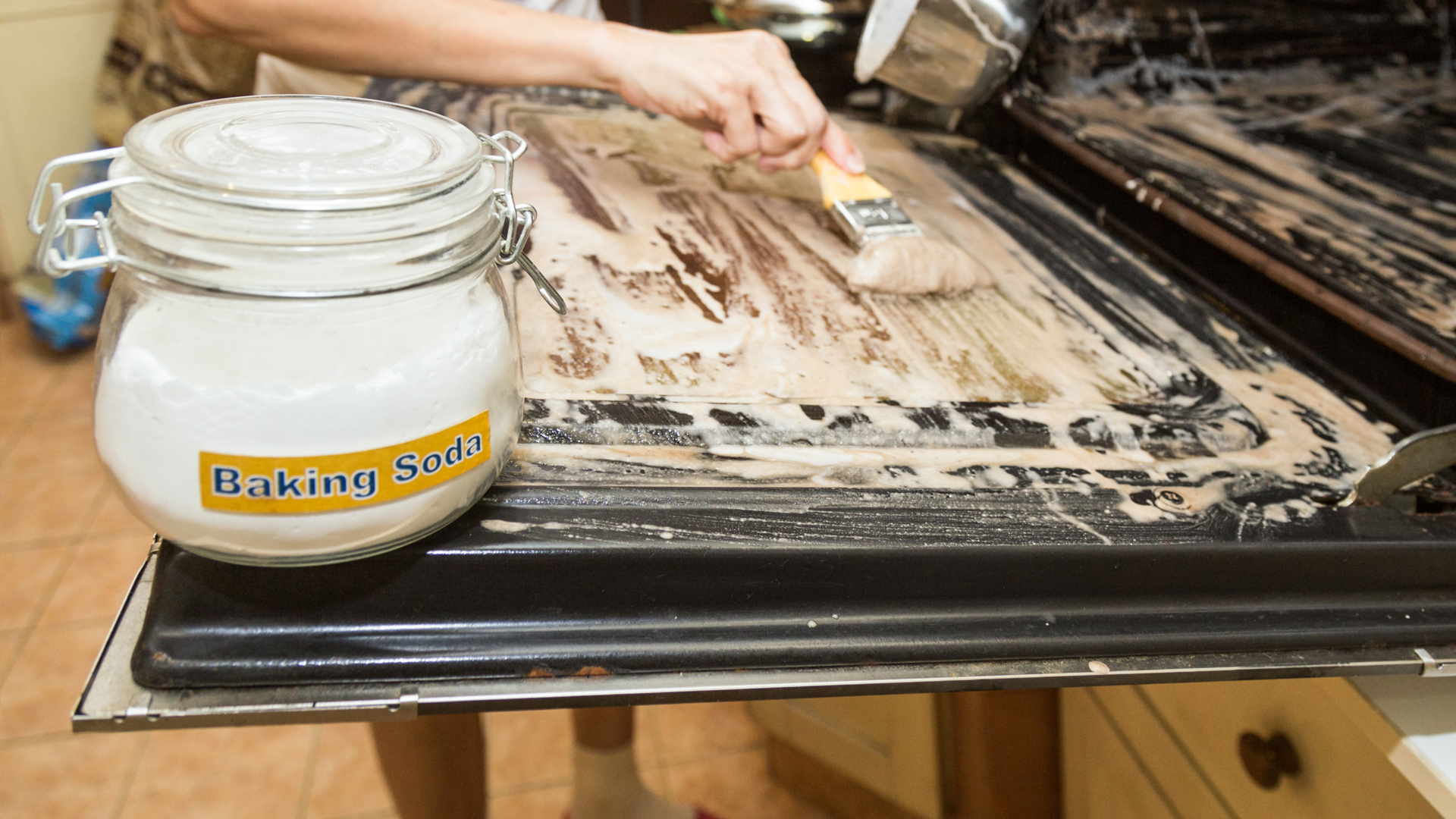
19. Use baking soda for an easy oven clean
For a failsafe and easy cleaning methods for how to clean an oven try filling a spray bottle with ½ a cup of baking soda and mix with ⅓ of a cup of water and ⅓ white vinegar. Spritz the solution on your oven’s interior and leave for up to 12 hours. Rinse away with a damp sponge the next day and prepare to marvel at precisely how much gunk you’ve managed to remove.
If your oven racks are super dirty, you might want to try leaving them to soak in the bathtub. Fill the tub with water and a few cups of baking soda. Pop the racks in and leave them to soak for a minimum of four hours, then rinse with clean water for gleaming results. It couldn't be simpler.
20. Degrease walls with lemon juice
Working out how to clean walls is no easy business, but there are a few hacks to keep yours in the best condition possible. If you're keen to remove grime and grease from your kitchen walls, try spritzing marks with pure lemon juice; leave it to soak in for a few minutes before gently wiping away with a clean dry cloth.
For a hardier DIY approach, use a mixture of baking soda and warm water to create a paste that can be applied directly to marks. Let it work its magic for a minute or two before wiping away with a wet sponge. Be sure to test this method on a smaller patch of your wall first, to ensure it doesn't damage it.
21. Use oil to clean grease off your hob
Struggling with food splatters on your cooker hood? The secret to dealing with unwanted greasy marks is… More grease. No, really. If you've been desperately trying to clean dirty residue from spitting pans from the hood with soap and water to no avail, try vegetable oil instead. Just massage a few glugs of it into the offending areas with a cloth, and watch it disappear.
22. Descale faucets with a plastic bag
If your kitchen faucet is covered in limescale or other tough-to-budge marks, there's an easy solution. Fill a small plastic bag with vinegar, wrap it around the tap and secure it in place with an elastic band—and leave it to work its descaling magic.
And that’s not the only way to tackle it: Lynsey has a couple of other tricks up her sleeve for you to try. “You can remove limescale from the tip of your kitchen tap by wedging half a lemon onto the tap head and leaving it for 30 minutes,” she recommends. “Alternatively, drench a paper towel in white vinegar and wrap it around the end – again, leave it for 30 minutes to see results.”
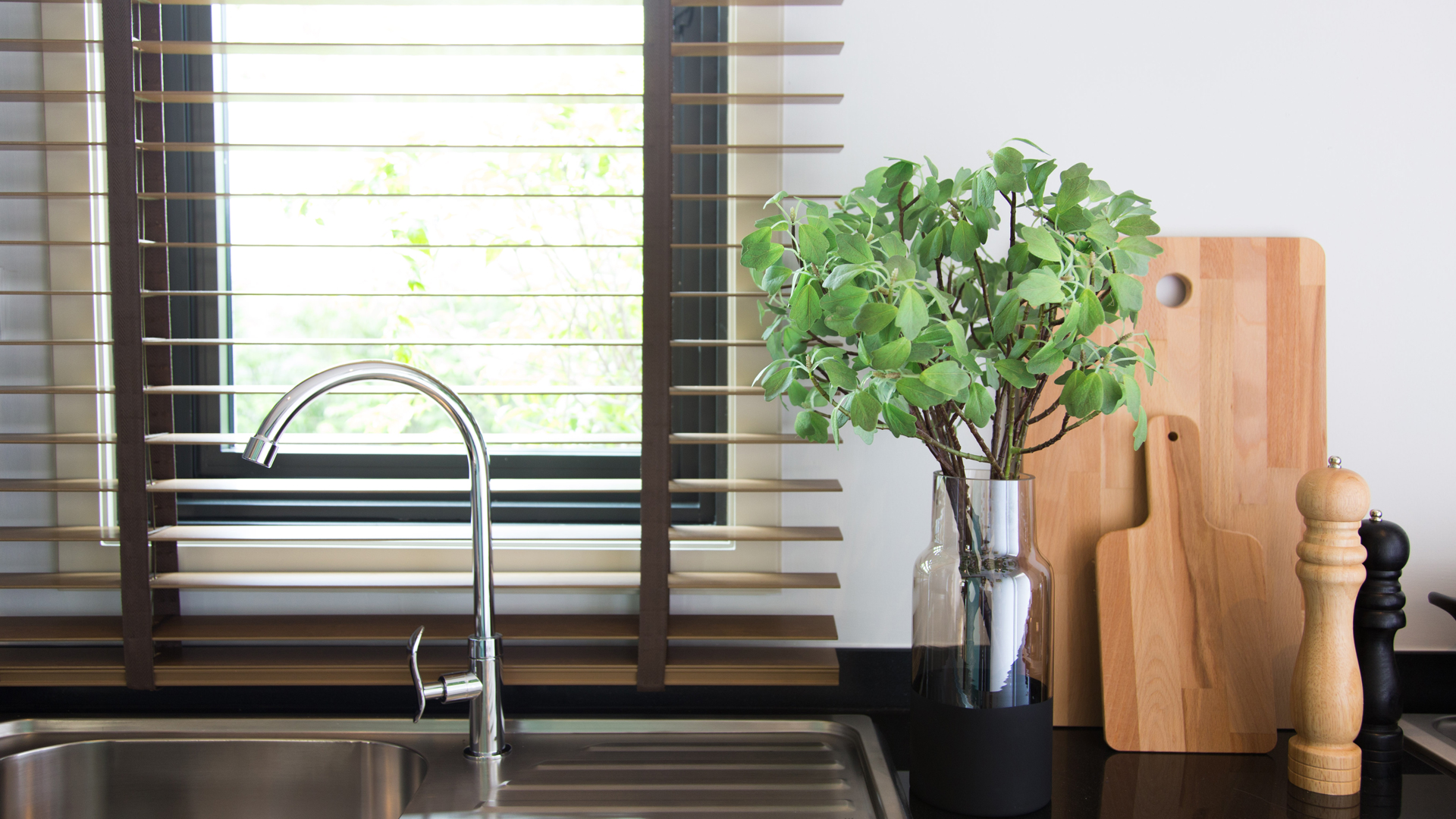
23. Use a sock to clean kitchen blinds
If you’ve chosen blinds for your kitchen window treatment, don’t forget to include them in your cleaning routine, as they can gather as much dust and debris as other surfaces – if not more. To clean them, there's an easy hack. Dip an old odd sock in water (with optional vinegar for extra sparkle), pop it on your hand, and use it as a fuss-free way to sweep over and in between the gaps of each slat.
24. Revive a porcelain sink with hydrogen peroxide
If you have a white porcelain kitchen sink that’s seen better days, it’s time to give it a refresh. Sprinkle a generous amount of baking soda over any offending scuffs and marks before carefully applying a small amount of hydrogen peroxide with a sponge. Scrub the mix away for a dazzling finish.
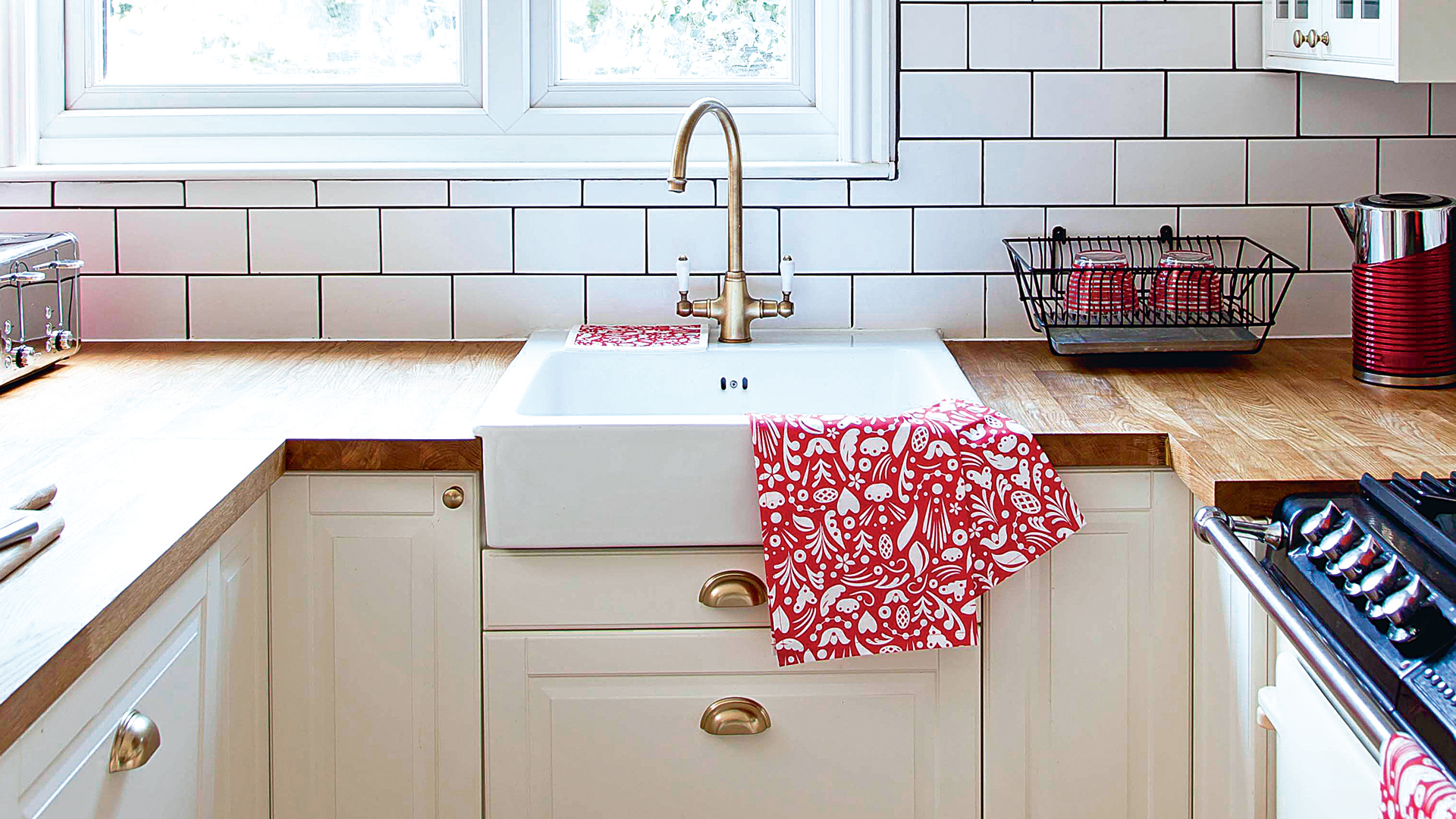
25. Use bicarbonate of soda to lift stains
Plagued by tannin-marked tea or coffee cups? Don’t panic, removing those tough-to-shift stains is easier than you might think.
Simply pour a small amount of dish soap into each offending mug, adding a sprinkle of bicarbonate of soda, before giving the cup a good hard scrub with a sponge. After this, it should look brand new.
Alternatively, you can use lemon. "If you have problems with stains on porcelain, such as dark stains after tea or coffee in your favorite cups, then use lemon to clean," suggests Dominika, "in the same way as on kitchen boards. It can therefore be used on plastics, wood, and porcelain." Simply rub the bottom of the mug with lemon and line it with salt.
26. Use water to tackle dust
This is not merely as confusing as it sounds, it's a savvy trick to make dusting a breeze. If you rely on a dustpan and brush to help you tackle crumbs on worktops or floors, you might be frustrated by their tendency to scatter as much as they collect. The simple trick to avoiding this is to dampen the dustpan brush before use.
Using a lightly damp brush will ensure crumbs, food debris and everything else will stick to the tool with minimal fuss. Simply wipe it clean over the bin after use for easy disposal.
27. Use ash to clean stainless steel surfaces
This savvy idea is ideal for cleaning stainless steel everything, from sinks to countertops. "If you have a fireplace or a woodturning stove, you can actually use leftover ash to form a paste, know as a lye, to remove any dirt stuck to stainless steel surfaces," suggests Heather. "Believe it or not, the combination of ash and water is a natural disinfectant and is perfect for soaking stainless steel in to remove dirt and pathogens, as well as naturally polishing your stainless steel."

Tamara is a highly experienced homes and interiors journalist with a career spanning over 22 years. Now the Lifestyle Editor of womanandhome.com, she previously spent 18 years working with the style teams at Country Homes & Interiors and Ideal Home. With these award-winning interior teams, she gained a wealth of knowledge and honed her skills and passion for styling and writing about every aspect of lifestyle and interiors.
A true homes and interiors expert, Tamara has been an ambassador for leading interior brands on multiple occasions, including appearing on Matalan’s The Show and presenting at top interior trend forecasting events such as the Autumn Fair and Spring Fair.
-
 Celebrities who overcame scandal and came back stronger than before - from Jane Fonda to Martha Stewart
Celebrities who overcame scandal and came back stronger than before - from Jane Fonda to Martha StewartScandals, controversies and fallouts can really harm a celebrity's reputation, but these stars proved there's power in putting in the work for a second shot
By Jack Slater Published
-
 Ranvir Singh’s denim midi dress is perfect for April date nights
Ranvir Singh’s denim midi dress is perfect for April date nightsYour favourite jeans will always be an easy outfit staple but denim dresses have the same comfort factor and more elegance.
By Emma Shacklock Published